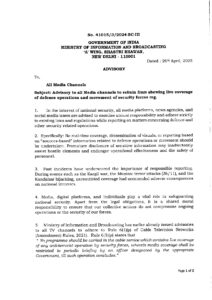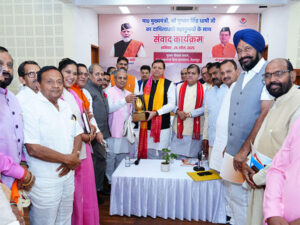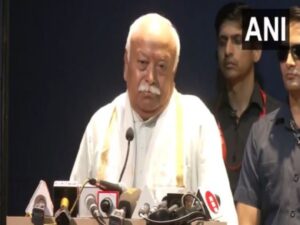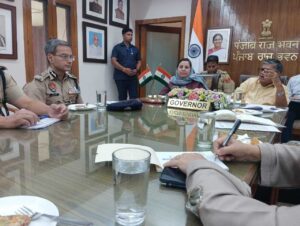15th Finance Commission found no merit in expanding disaster list to include heatwaves: Govt
New Delhi, Jul 24 (PTI) The 15th Finance Commission had examined states’ request to expand the list of notified disasters to include heatwaves but did not find merit in it, the government informed the Lok Sabha on Wednesday.
Replying to a question by Congress MP Sukhdeo Bhagat, Union Earth Sciences Minister Jitendra Singh said that extreme heat and sunstroke claimed 10,635 lives in India during the 10-year period starting from 2013.
However, he said that steps taken by the India Meteorological Department (IMD) to improve monitoring and early warning systems have helped minimise the loss of life and property during extreme weather events, including heatwaves.
Bhagat asked whether the government proposes to declare heatwaves a national calamity. Singh replied that the 15th Finance Commission had considered the issue of including more calamities in the existing notified list.
“The Commission in para 8.143 of its report had observed that the list of notified disasters eligible for funding from State Disaster Response Mitigation Fund (SDRMF) and National Disaster Response Mitigation Fund (NDRMF) covers the needs of the State to a large extent and thus did not find much merit in the request to expand its scope,” the minister told the Lok Sabha.
Currently, the notified list of calamities eligible for National Disaster Response Fund or State Disaster Response Fund (SDRF) assistance includes 12 disasters — cyclone, drought, earthquake, fire, flood, tsunami, hailstorm, landslide, avalanche, cloudburst, pest attack, and frost and cold wave.
A state government can use up to 10 per cent of the annual fund allocation of the SDRF, subject to certain conditions and norms, to provide immediate relief to victims of natural calamities they consider to be ‘disasters’ within the local context, even if these are not included in the centrally notified list.
States had previously requested the commission to include incidents such as elephant attacks, lightning, mining-related fire hazards, snakebites, heatwaves, river and coastal erosion, and public health disasters like Japanese encephalitis, Nipah, and the COVID-19 pandemic in the list of calamities eligible for funding support from the SDRF and the NDRF.
They had also requested that the amount earmarked for state-specific disasters be increased to 25 per cent from the current 10 per cent of the SDRF allocation, given the large number of local calamities not covered under the national list.
According to the commission’s report, it examined the requests from states and felt that most of the calamities suggested for inclusion in the notified list are “state-specific or region-specific and can be difficult to quantify, as the scale of severity would vary from region to region”.
The minister also reported that the country recorded 10,635 deaths due to extreme heat or heatstroke during the 10-year period starting from 2013.
During this period, Andhra Pradesh recorded the highest number of deaths at 2,203, followed by Uttar Pradesh (1,485), Telangana (1,172), Punjab (1,030), Bihar (938), Maharashtra (867), Odisha (609), Jharkhand (517), Haryana (461), West Bengal (357), Rajasthan (345), Gujarat (263), and Madhya Pradesh (213). Delhi saw 13 such deaths.
The country recorded the maximum number of deaths in 2015 at 1,908.
India experienced 536 heatwave days this summer, the highest in 14 years, with the northwestern region recording its warmest June since 1901, according to the IMD.
The country recorded 181 heatwave days in June, the highest since 2010.
Official data showed that India recorded 41,789 suspected heatstroke cases and 143 heat-related deaths in one of its hottest and longest heatwaves this summer.
The intense heat overwhelmed the water supply system and power grids, with Delhi grappling with a severe water crisis. The mercury breached 50 degrees Celsius in parts of Rajasthan and nighttime temperatures hovered around 35 degrees Celsius in many places.
In Delhi, which logged 40 consecutive days of temperatures above 40 degrees Celsius from May 13, there have been around 60 heat-related deaths this year, according to media reports.






